The Need for Relationship Mapping Goals in Enterprise Sales
If you’re part of a B2B sales team, chances are that ABS as a strategy is on your radar. Account Based Selling (ABS) burst into the spotlight in the mid 2010s and has been steadily gaining traction as the go-to approach among B2B sales organizations. Who wouldn’t want to unlock the full potential of their key accounts?
Identify your target accounts, put together a team of sales plus marketing, work out a hyper-personalized messaging and content strategy for those accounts, and measure your efforts. Sounds simple enough!
The best account managers, however, have a secret sauce that differentiates them from the others. At the core of their ABS is an often-overlooked perspective–selling to the humans behind the steely structures that make up their accounts lists.
While sales processes have moved forward by leaps and bounds, thanks to these sales champs, the technology that supports these power moves unfortunately has not. An account manager needs to keep a tab on several parameters while reaching out to different personas today to simply break through the everyday clutter. This is possible at scale provided the account manager has neatly laid out relationship goals for all the stakeholders in the account, especially the buying committee.
As a company that works closely with key account management teams from across the globe, we have a vantage view to unfolding trends. What can be a blink and miss moment is slow motion for us. That there is a huge gap in how key account management teams are doing relationship mapping today would be an understatement. Only a handful of companies and sales leaders are laying down relationship targets, and an even smaller slice plots a course to hit them.
The consequence?
Relationship mapping is still ad-hoc. Account Managers are struggling to identify the right people, initiate meaningful conversations, keep track of who they’ve spoken to and stitch back their efforts to the larger business goals. While their work happens on CRMs partially, they tend to use ad hoc tools (or no tools sometimes!) to build org charts.
Relationship Mapping and ABS Maturity
Organizations at various stages of ABS maturity focus differently on relationship mapping.
The more mature shops are eager to streamline their relationship mapping with technology. They understand that without technology they can’t systematize a process-driven approach to relationship mapping at scale. For them, nailing relationships is non-negotiable.
“
They have realized that key account management in its simplest form is all about pure human-to-human connections in a B2B world.
However, organizations that are just climbing up the ABS maturity ladder recognise the need for methodical relationship mapping but often default to manual approaches to tackle the challenge. While the manual fix might hold up in the short term, it often breaks when the business scales and more stakeholders become part of the engagement mix.
Our latest release is aimed at helping both seasoned and emerging ABS-driven enterprises realize the benefits of tech-powered relationship mapping. We’re certain it’s time for a shift. KAM should no longer be seen solely through the ABS lens; it’s crucial to also see it through the people lens. As leaders, we’re committed to paving the path, highlighting that tech-enabled ABS isn’t just beneficial—it’s essential.
The Unveil: Relationship Mapping that puts People at the Center.
DemandFarm’s new and enhanced features released as part of Omphalos are designed to ensure your Account Managers (AM) are spending 100% of their time talking to the right people, building relationships that move deals forward and effortlessly track how effectively they are engaging the C-suite and other key stakeholders. Let’s dive in.
Org Chart 2.0: More Intelligent. More Effortless. More Intuitive.
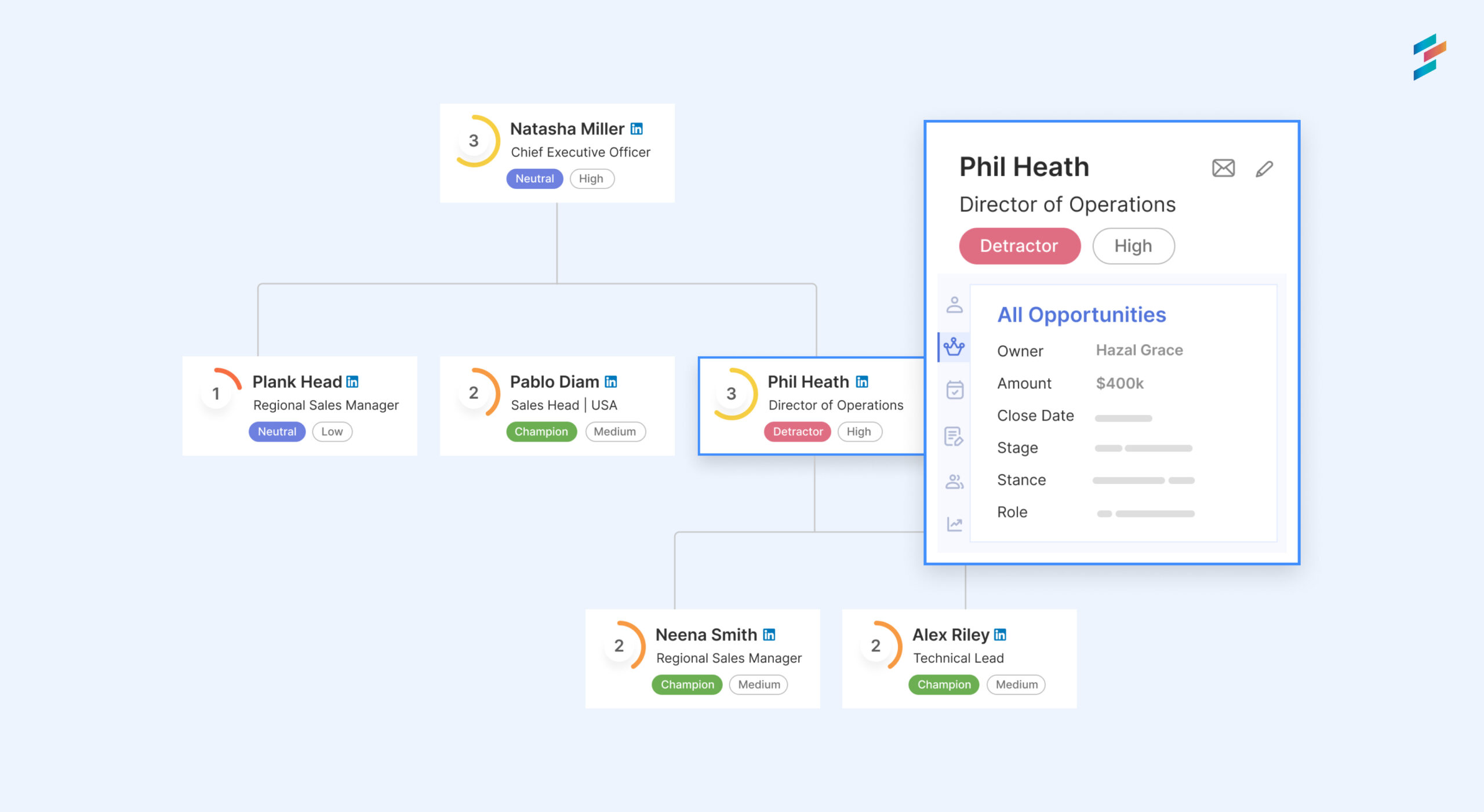
Here’s an interesting discovery we made when we looked into our strategic account engagements: on an average, it takes at least 8 to 15 meetings and connecting with approximately 10 different stakeholders across more than four roles to lock in these strategic partnerships.
While the specifics might differ based on your organization’s size, industry and multiple other factors, here’s a constant: strategic deals demand a higher-than-average number of touchpoints and stakeholder involvement.
Pinpointing powerful contacts among thousands, distinguishing supporters from detractors, understanding their relationship dynamics all can be daunting if the vehicle you’re using to visualize and take action isn’t snappy.
And this is exactly why we have made some massive upgrades to our Org Chart, especially from the lens of cutting down the time it takes for account managers to build context-rich ones. Here are the highlights:
A Fresh Look That’s Designed To Help You Find Information Faster
DemandFarm’s Org Chart looks all-new, but works exactly the way it used to. Only faster, easier to navigate, and every piece of context—from a stakeholder’s buying power, to their current status to associated opportunities—everything is now more intuitively visible.
A single click on the contact card reveals every ounce of context there is to the contact. Brand-new filters, zippy pinch and zoom, the upgrades are aplenty. Creating and maintaining org charts is now faster and more delightful thanks to the latest UI update and some sleek under-the-hood technical improvements.
Make it Dead Easy for your AMs to Prioritize who to include in their Org Charts, with Suggested Contacts
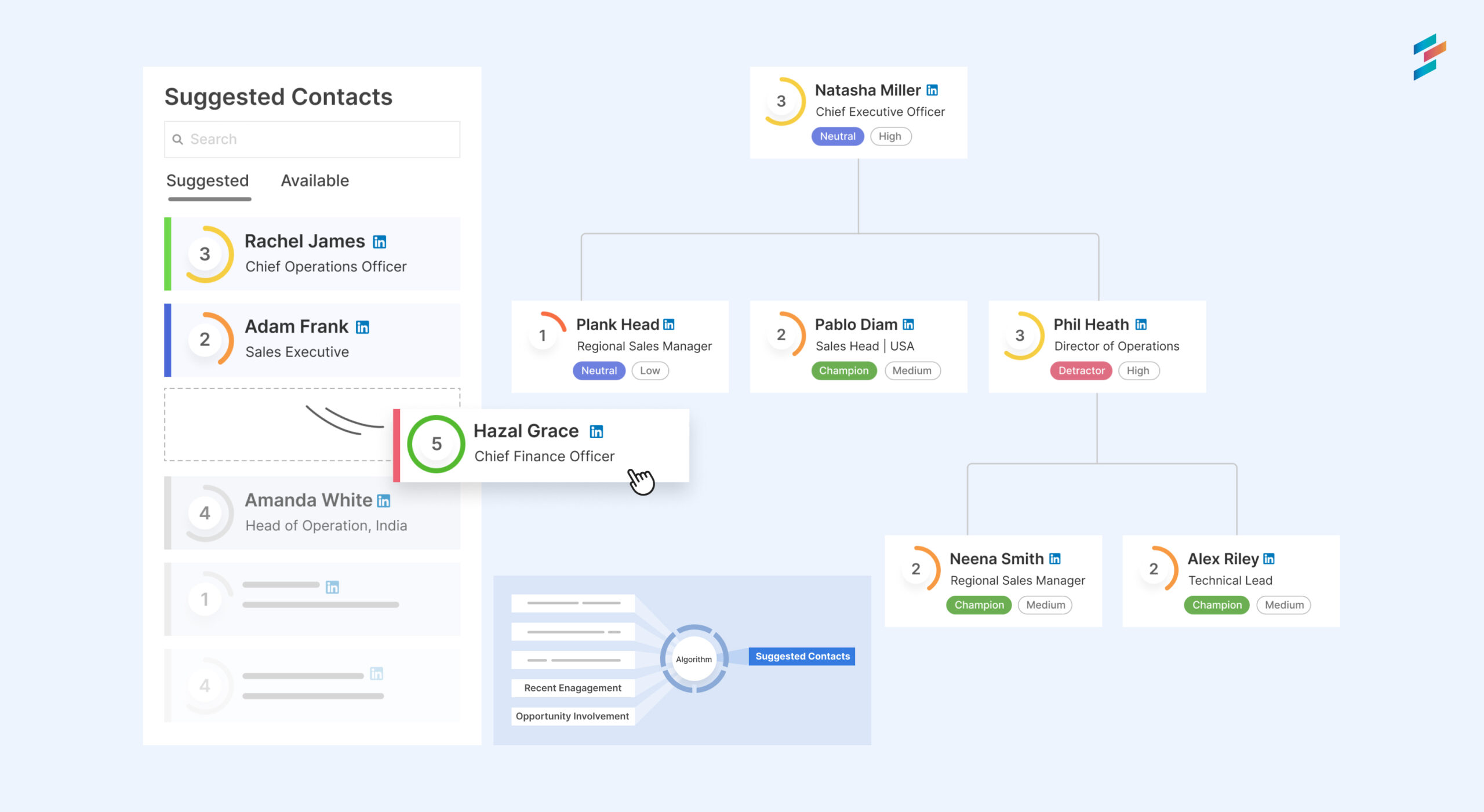
Picture this: you’re an account manager who’s got 30 to 50 new contacts that are yet to be added to the org chart. Role changes, departures, new meetings and more, all these variables only end up making this task herculean.
And now you’ve to figure out who among this sea of contacts to prioritize adding to the org chart.
Most account managers are likely to find themselves stuck in analysis paralysis. They end up losing time choosing who to include instead of talking more with customers and partners.
That’s the pickle we’ve set out to fix with Suggested Contacts.
Suggested contacts is powered by an rule-based engine that takes into account a contact’s static, think role, title, etc. and evolving attributes—like their latest engagements in a meeting or involvement in opportunities—and then recommends a score based on which AMs can take a call on whether or not to include the contact in the org chart.
“
Simply put, we act as a second brain that does the heavy-lifting of identifying high value contacts that deserve a spot in your org chart so that your account managers have more time to focus on building meaningful relationships that matter.
Jump Into Customer Conversations With More Confidence than Ever with Relationship Dynamics
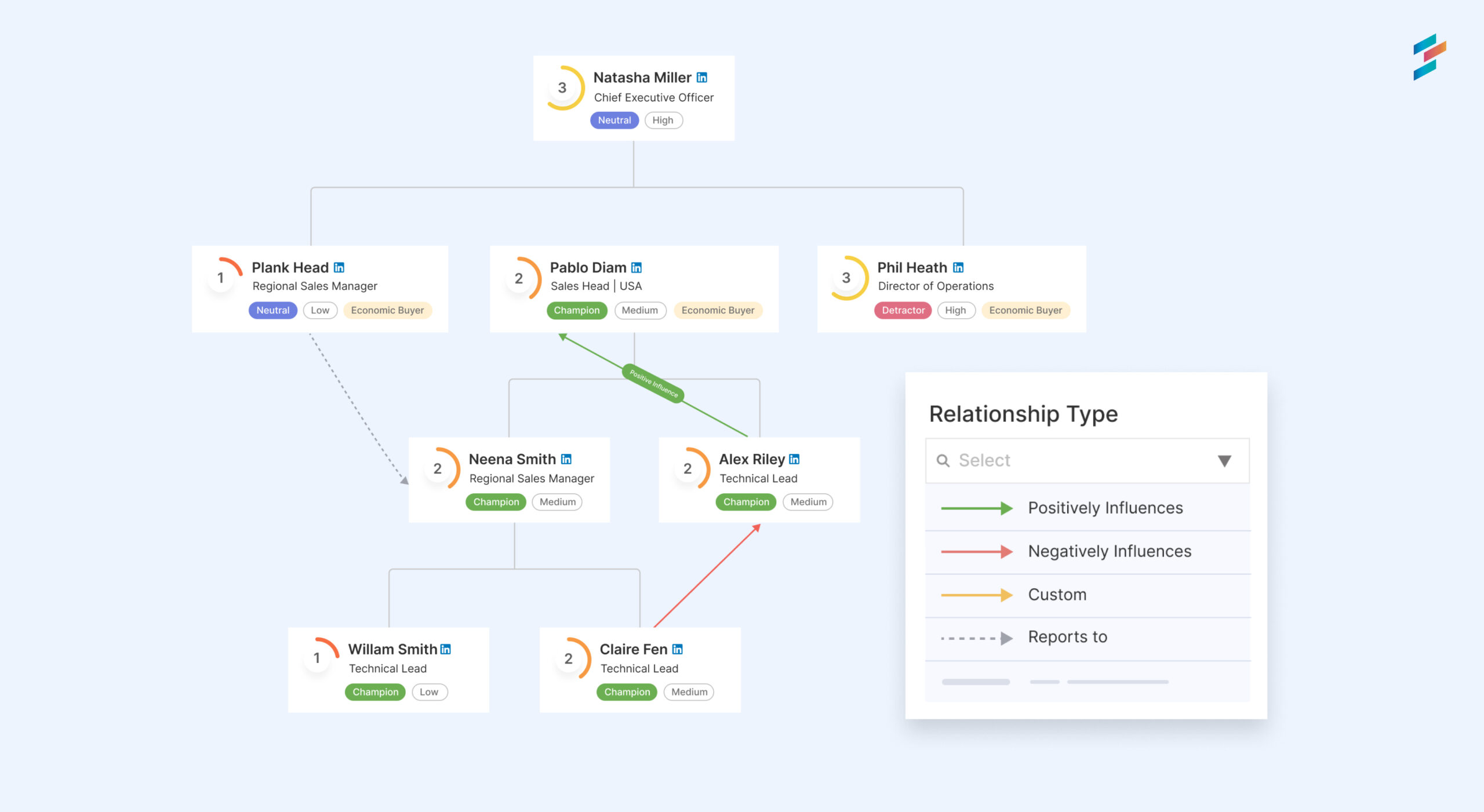
Picture this–you’ve received glowing feedback for one of your AI solutions you recently piloted with a marquee customer. Your POC is excited to champion the solution across multiple regions.
They’ve pointed you to all the stakeholders who you’ll need to win over, some of whom, despite not controlling the budget or being part of the buying committee, have significant sway in the decision-making. They’ve also given you a heads-up on critics who can derail the initiative.
These are invaluable relationship insights, but if you try to maintain these as notes or mental maps, it can easily become another pile of data.
What you need is a visual medium to map them out while also being able to add every piece of context and that’s exactly why we built Relationship Dynamics.
“
Effortlessly plot relationship dynamics between different stakeholders in your customer organization, take advantage of the out-of-box labels such as positive influence, negative influence, dotted-line reporting and more or go ahead and create your own custom relationship dynamic.
Crystal clear understanding of the hidden relationship dynamics means crystal clear understanding of the buyer. In other words, now, your account managers can go into client conversations with more confidence than ever before.
Introducing an Activity Planner that packs the punch of a Project Management Tool.
You’re in the thick of a multi-million dollar deal. As the deal evolves, the web of stakeholders is also expanding. More champions, more detractors, you even find the buying committee is being advised by some external partners. Each week you see new dynamics spring up.
It’s a high-stakes game. Every stakeholder is crucial. A few off-color conversations can derail the momentum. Hence, every step—from planning meetings to creating an engagement strategy to capturing subtle hints that indicate things are moving in the right direction—all of it needs to be thought out carefully. And ideally, they should be in one place so that it’s easy to do pulse checks.
In reality, there’s just too many things to plan for and it’s humanly impossible to stay on top of all of them without an efficient task management system in place.
Our new Activity Planner addresses this challenge head on by bringing in a slice of strategic project management to your key account planning efforts.
See All the Steps you’ve taken to Engage an Account under One Roof.
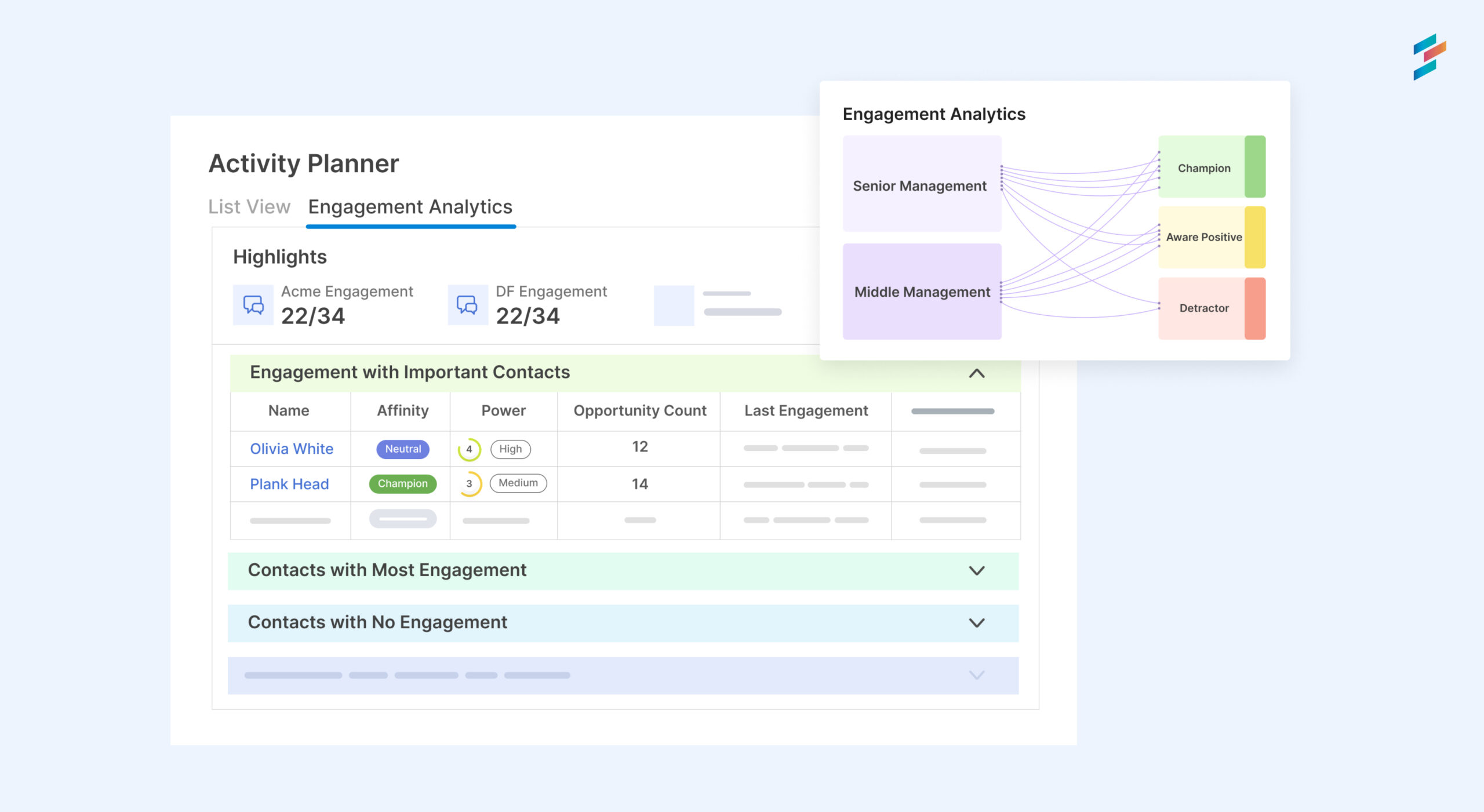
Having a snapshot of all engagements with various stakeholders in an account, that too in one place can be a real eye-opener. It helps you uncover any missed actions and also think of new ways to keep the dialogue going until an objective is met. You also get extensive filters like contacts, tasks, status and more that help you zoom in on the nitty-gritties.
Re-imagine Task Management with the All-New KAM Table— the Kanban Board built for Key Account Management
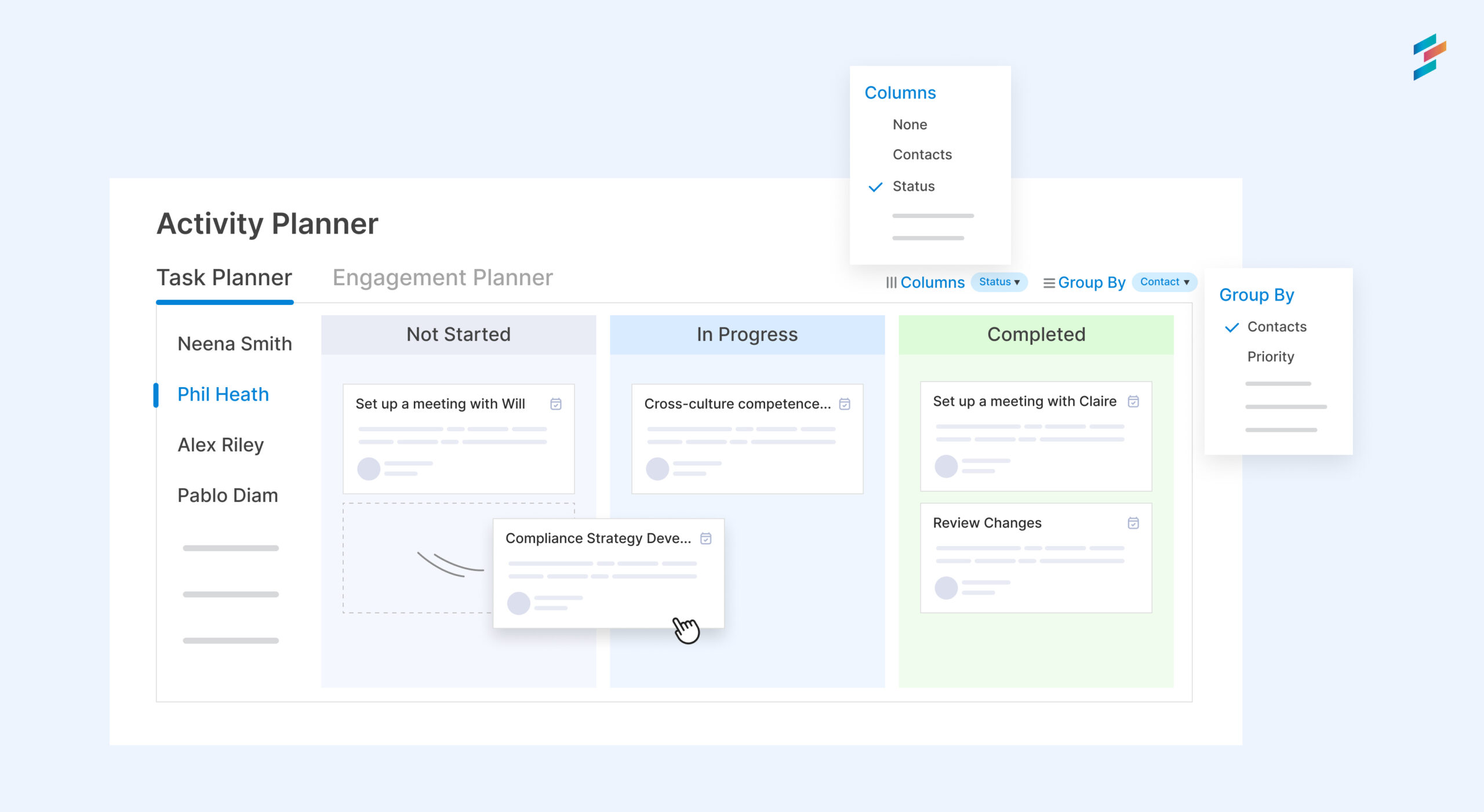
Let’s hark back to the high-stakes deal. You’ve a long list of stakeholders to engage. Multiple emails to send out, slew of internal and external meetings to plan and maybe even dozens of ABM campaigns to fire away to the different cohorts you’re looking to engage in the buying committee. You also have to strategize what you’re going to be saying in all these emails, meetings, and campaigns and which teams are to be involved.
So more planning, more tasks. Multiply all this effort across all deals running in parallel. Clearly your account managers are going to burn out without an efficient task management system in place.
And it can’t be any task manager. It needs to sit right within where you have all your people data so that your AMs don’t sink time into manually tagging who’s responsible for which task.
That’s why we built the KAM table – our take on the Kanban board tailored for key account management.
If you ask us, “does the new KAM Table make life easy for my AMs in their day-to-day workflows? A BIG yes!
Your AMs can now:
Visualize and track all tasks in a Kanban board tailored for Account Manager workflows:
Kanban boards are loved by all for task management because they are unbelievably simple.
But our KAM Table is no typical Kanban board, in the sense that it lets your AMs have complete control over the rows and columns.
AMs can now group tasks by status (not started, in-progress, completed), by priority (low, medium, high), by quarters, by months and more. For instance, when preparing for the day, being able to filter tasks by priority is key, but if they were looking to plan out tasks for a whole month, then the month view comes to the rescue.
But that’s not it. Say you have ten people involved in a deal, and you want to look at each of their tasks and progress, all in one view. Now, that’s also possible.
We’ve packed in so much flexibility because at different points in time, your AMs are going to want to look at the same tasks through different lenses.
Drag-and-drop tasks across columns: Maybe your AMs are looking to push some tasks to the backburner to make room for urgent ones. Or they want to clean-up their in-progress tasks list by moving all completed items to a separate section. All that, and more is possible now.
Declutter Meeting Planning and Tracking with the Enhanced Meeting Planner
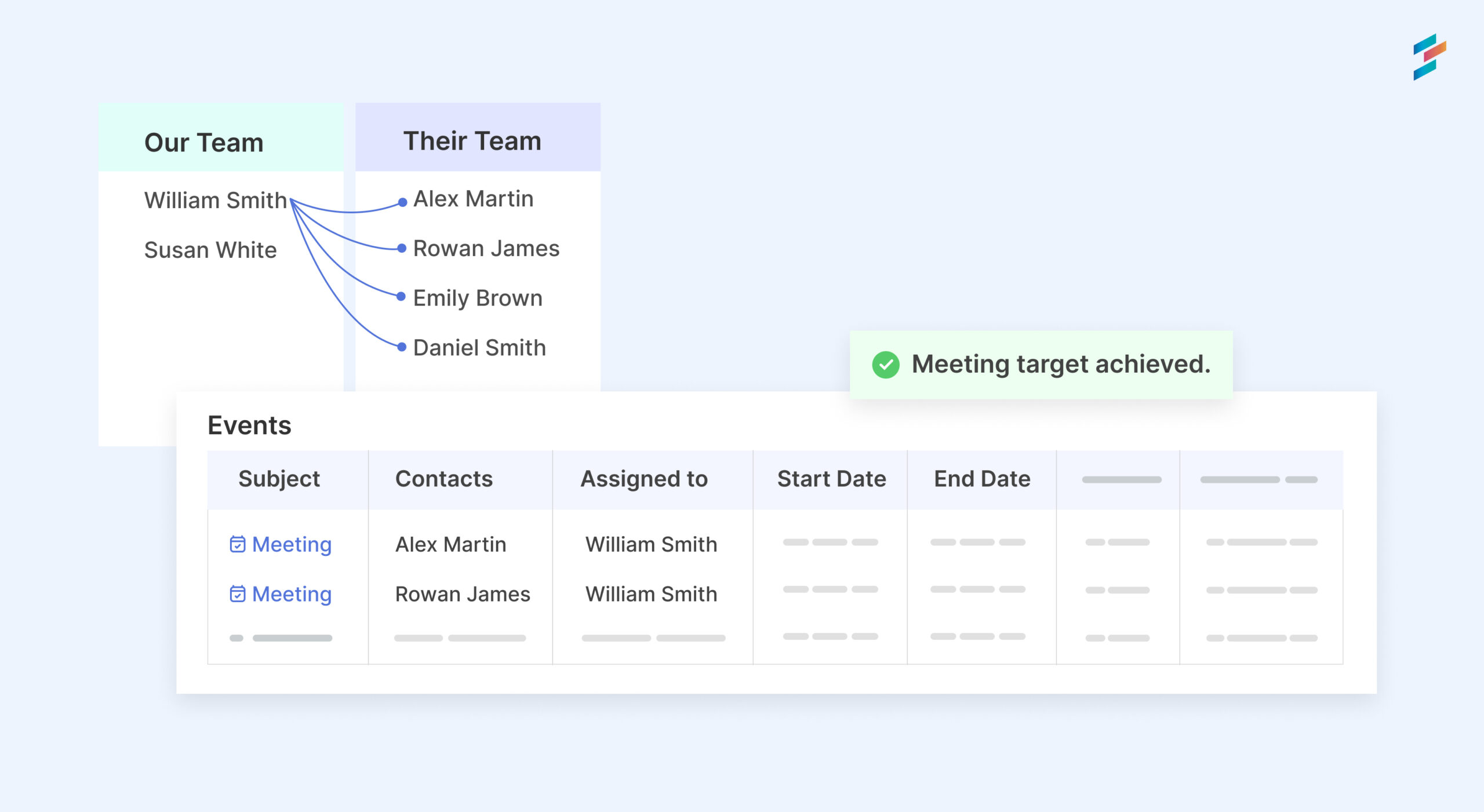
Managing key accounts is the ultimate juggling act. Multiple stakeholders to meet, make feel heard, and keep engaged. That’s why well-planned meetings are critical. Some stakeholders might want to hear from you often, almost weekly, while others might want to get facetime only once in a quarter or a year. Account managers should be able to set these vastly different types of meetings without hassle.
“
Our enhanced meeting planner offers AMs tons of flexibility when it comes to setting up meetings. What’s new, you ask?
- Complete control over the meeting frequency. Check!
- Ability to create meetings involving just two or a group of people. Check!
- Drill-down analysis that shows who met whom and all other context related to the meeting, that too in a single view. Double check!
See engagement patterns in one quick glance and plan next steps instantly with the new highlights dashboard.
“Are we talking to the right people?”
“Are we engaging the C-suite and decision-makers enough?”
“Do we know powerful stakeholders whom we haven’t spoken to in a while?”
“Do we have a plan to re-engage important conversations that went cold?”
These are questions that keep both sales leaders and account managers awake at night.
The engagement highlights dashboard gives you answers to all these questions and more so that you don’t lose deal momentum due to inactivity in your key accounts.
Course-correct on the Go with Interactive In-app Reviews and Smart Exports
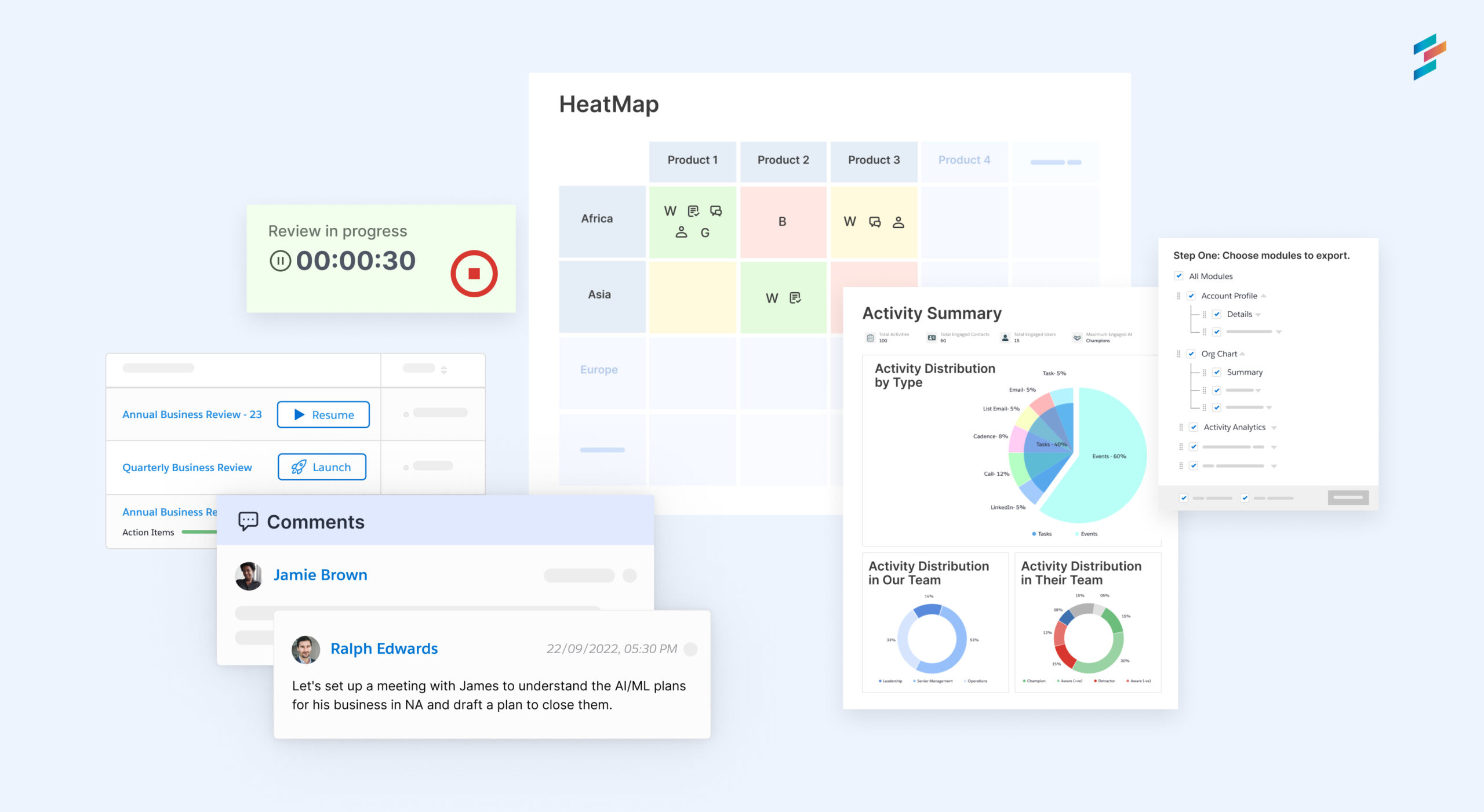
Internal customers—sales heads and cross-functional teams involved in key account management— are as important as external customers. Without rock-solid internal alignment, usually brought about with periodic account reviews, your customers are not going to have a delightful experience with you.
Hence, it’s a crucial area of focus in Omphalos.
A smooth review experience helps account managers and sales heads gain clarity on areas that need effort, save time spent on unnecessary back and forths, and help actionize feedback. That’s why we’ve given a new spin to our review process.
Now, all reviews can be initiated and accessed from one place. In-app reviews are as easy as sharing a screen on a Zoom meeting. All AMs have to do is select the modules they would like to include in the review and hit start.
Reviews can also be paused and resumed without any restrictions. AMs can also add comments on the fly and tag respective owners. Navigation between different modules like the Org Chart, Heatmap and Growth Planner is also now a breeze.
But reviews don’t always happen in-app. What if your AMs want to share their account plans for an offline review? That’s where our smart exports come in.
Smart, because your exports aren’t just raw data captures anymore. Now, they are visually appealing reports that also have auto-generated summaries of crucial pieces of information.
Which means, your AMs don’t have to spend time exporting data into excel, and then visualizing them in the form of charts and graphs. We do it for you!
Here’s an interesting insight—we’ve seen instances where account managers are keen to share selective parts of their plan with their customers during their routine check-ins. With smart exports, even this sharing is seamless, thanks to the ability to pick and choose modules to export.
Smart exports are currently available for most modules within the app. The functionality will be extended to the remaining modules shortly.
Experience Omphalos Today!
Proactive relationship mapping, an often overlooked part of ABS, is the need of the hour. It’s the secret to making the most of every opportunity—be it a renewal or growth, especially now when spending is more cautious than ever.
By taking advantage of DemandFarm’s Spring Release, Omphalos, you can unlock significant productivity gains in the day to day of your account managers. Which means, now they will have more time to be out there, talk more, meet more, and really get a solid understanding of what your customers are thinking and needing.
 On-Demand Webinar: Unfiltered take on AI in Account Planning: Meet DemandFarm’s KAM AI
On-Demand Webinar: Unfiltered take on AI in Account Planning: Meet DemandFarm’s KAM AI 


